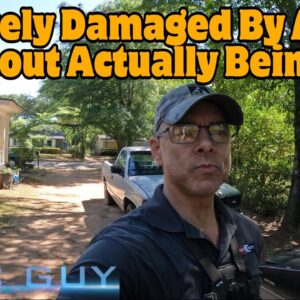Understanding the Impact of Tree Damage on Power Lines and Appliances
In our day-to-day lives, we often overlook the interconnectedness of nature and technology. However, incidents such as a tree falling on a power line can lead to extensive damage—not only to the power line itself but also to the electrical appliances connected to it.
Recently, I was called to a customer’s home where a tree had indeed fallen on a power line, causing a series of complications. This unfortunate event is a reminder of how vulnerable our systems can be to natural occurrences.
The Initial Assessment
Upon arriving at the scene, I found that the power line was suspended awkwardly, further complicating the situation. The homeowner had noted that most of their systems had come back online following the incident, except for the air conditioning unit installed three years ago. I decided to begin troubleshooting by checking the circuit breakers and assessing the state of the air conditioning unit.
Checking the Circuit Breakers
The first step in diagnosing the issue was checking the circuit breaker for the air conditioning unit. Surprisingly, upon inspection, I found that the breaker was turned off. After resetting the breaker, I checked for power. To my dismay, I found no power flowing to the unit.
Troubleshooting the Air Conditioning Unit
With no power detected, I proceeded to check for direct shorts and explored the ohm readings to determine if something was amiss. My readings were consistent, yet I couldn’t identify why the breaker was tripping. Investigating deeper, I discovered some burnt wiring that indicated previous attempts to repair the damage caused by the fallen tree.
Electrical Issues Uncovered
The homeowner mentioned that an electrician had visited the property to replace burnt wires. I was curious about what had been done, so I examined the connections closely. Unfortunately, it appeared that the repairs were inadequate, as this wiring was not connected properly.
Finding the Cause of the Problem
As I delved further, I stumbled upon a perplexing sight—an egg sac, possibly from a black widow or brown widow spider, right where I had been working. With caution, I continued my inspection, relevant to the electrical issues at hand. This unexpected encounter only added to the day’s oddities.
Testing and Verifying Connections
My next step involved analyzing the connections feeding into the compressor. After conducting some resistance checks, I could determine the health of the components. The readings were lower than I anticipated for both the start and run wires, which indicated a potential issue.
Replacing Faulty Components
It became evident that we had a faulty transformer, so I pulled a new transformer from my van that matched the specifications of the existing one for replacement. Before connecting it, I stripped the wires and prepared them for a secure attachment.
Secure Connectors
As I connected the new transformer, I ensured that I employed the right technique for securing the connections. I utilized spade connectors for the compressor connections and checked the integrity of the wires closely to make sure everything was properly crimped.
Powering Up and Testing the System
Once everything was connected, it was time to power the system up. I double-checked each component—making sure that the thermostat wires and high-voltage connections were correctly set up—before cautiously turning the power back on.
Monitoring Electrical Behavior
Initially, I was met with a disappointing sight as the transformer blew immediately upon activation. I had to step back and isolate different parts of the system to identify the issue at hand. This included disconnecting the board from the thermostat wire to see if it would trip again. I was relieved to find that it did not, which indicated that the problem might not stem from the core components of the air conditioning unit.
Identifying the Thermostat Issue
Further diagnosis directed attention to the thermostat. Attempts to jump the wires confirmed that the thermostat was indeed malfunctioning. The blower operated, and the harness initiated, but the system wasn’t fully cooperating as expected.
Final Troubleshooting Steps
Before concluding my assessment, I made one last attempt to replace the thermostat to see if this would restore functionality. Within minutes of replacing it, I heard the telltale sound of the air conditioning unit coming to life. The system began operating and we were able to provide the customers with cooling relief.
Wrap Up and Lessons Learned
This situation serves as a significant reminder of how essential it is to have both the right equipment and proper knowledge when tackling repairs following damage caused by natural occurrences. It underscores the importance of thorough assessments and the necessity of following up on previous repairs to prevent future problems.
Importance of Professional Help
Often, homeowners may think it’s viable to troubleshoot and repair electrical issues on their own, but as clearly demonstrated in this scenario, engaging a professional is often the best course of action. The implications of inadequate or improper repairs can result in exacerbated damage that may require substantial resources to resolve.
Conclusion
Whether it’s a fallen tree or a malfunctioning appliance, understanding the relationship between electrical wiring and components is critical. In moments of chaos, from downed lines to sparking wires, professionals must be called to navigate the complexities of electrical systems to ensure safety and efficiency. If you found this case study insightful, please consider liking this video and subscribing for more informative content. Let’s equip ourselves with the knowledge to protect our homes better!

